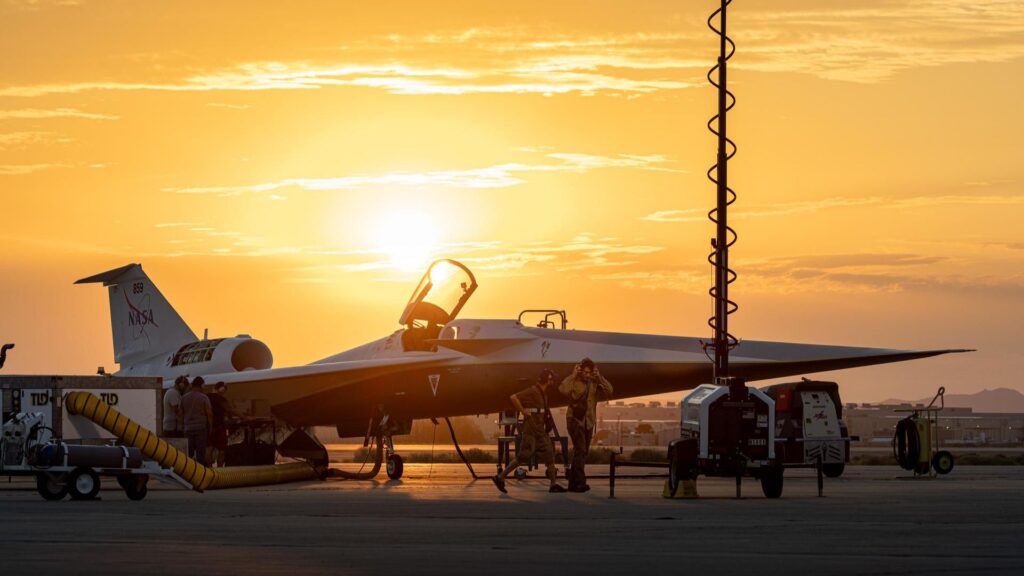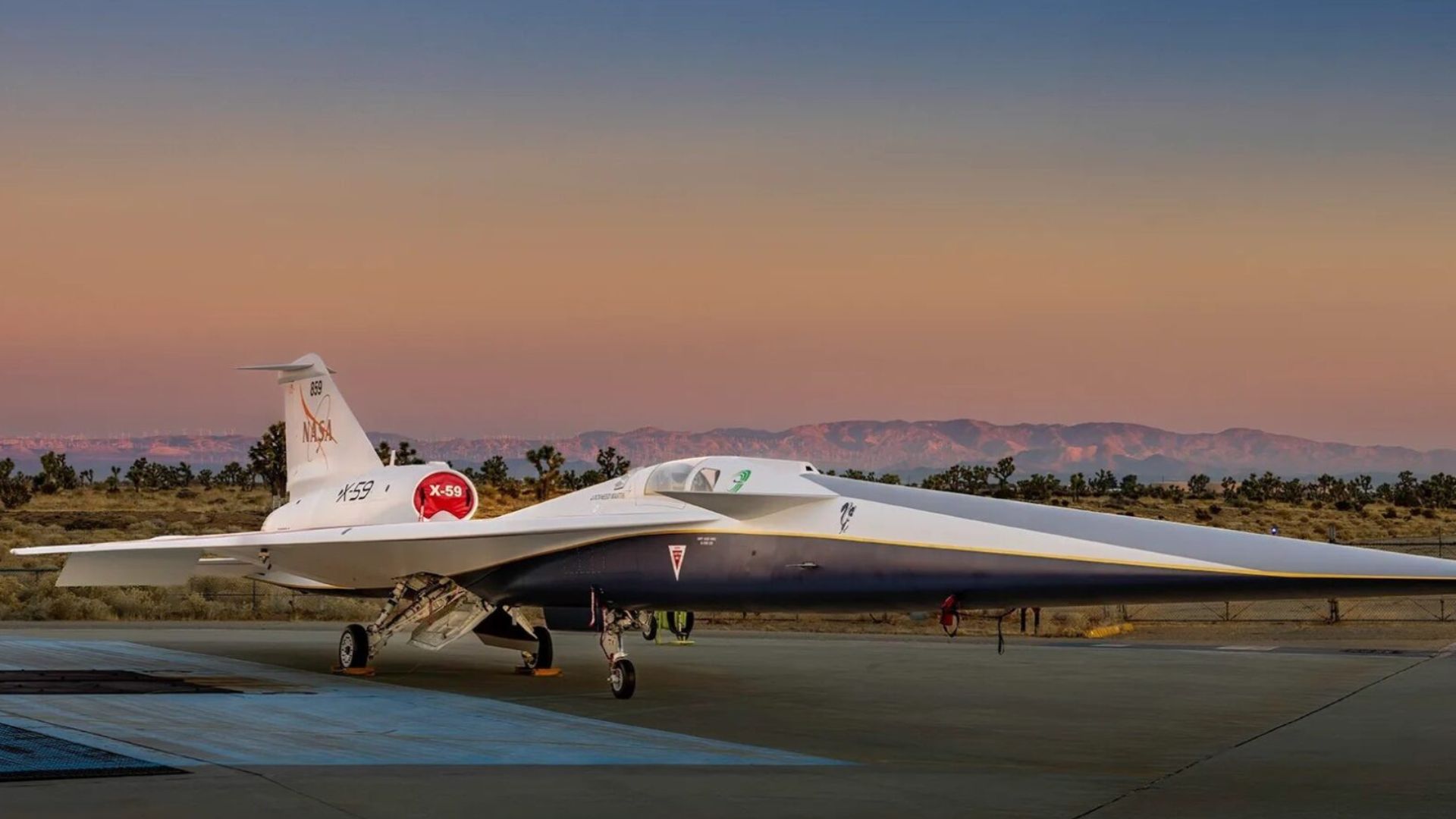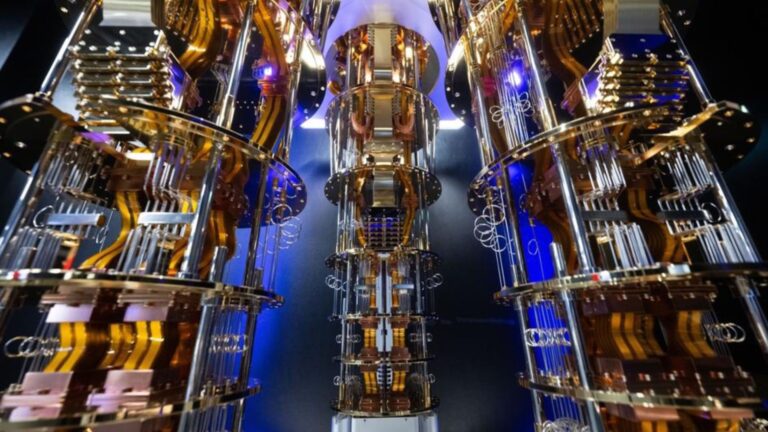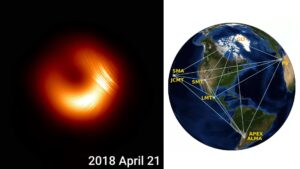
NASA’s experimental X-59 supersonic jet is completing final safety checks ahead of its historic maiden flight, potentially within weeks, as the agency prepares to test revolutionary quiet supersonic flight technology that could transform commercial aviation. The sleek aircraft, dubbed the “Son of Concorde,” has successfully completed low-speed taxi tests in July at U.S. Air Force Plant 42 in Palmdale, California, marking the first time the experimental jet moved under its own power (NASA Armstrong).
Engineers are now conducting medium- and high-speed taxi tests as the final ground-based preparations before takeoff. On August 18, maintenance crews performed a critical hydrazine safety assessment, confirming the effectiveness of a backup system that enables in-flight engine restarts. The X-59’s Flight Test Instrumentation System has logged 237 days of ground tests, generating more than 8,000 files and tracking over 20,000 parameters to ensure system reliability (NASA).
Revolutionary Design Eliminates Sonic Booms
Unlike the thunderous sonic booms that restricted the Concorde to over-ocean flights, the X-59 is engineered to produce only a soft “thump” comparable to a car door closing. The aircraft’s unique design features a 99.7-foot-long fuselage with an elongated needle-like nose constituting one-third of its total length, positioning the cockpit midway down the aircraft without traditional forward-facing windows (Aerotime).
Powered by a modified General Electric F414-GE-100 engine producing 22,000 pounds of thrust, the X-59 is designed to cruise at Mach 1.42 (approximately 925 mph) at 55,000 feet altitude. The top-mounted engine placement and specialized shaping disperses shockwaves into smaller ripples rather than the ground-shaking effects that plagued earlier supersonic aircraft (Wikipedia).
The innovative design incorporates a multi-camera external vision system to compensate for the lack of forward-facing windows, allowing pilots to navigate safely while maintaining the aircraft’s boom-reducing aerodynamic profile. NASA test pilot Nils Larson will rely on this system during ground operations and flight testing phases.
Comprehensive Safety Systems and Conservative Flight Plan
NASA test pilot Nils Larson will conduct the inaugural flight, which will be deliberately conservative—a low-altitude loop at approximately 240 mph and 12,000 feet altitude lasting about one hour. The flight will depart from Palmdale and land at NASA’s Armstrong Flight Research Center in Edwards, California.
The aircraft incorporates multiple layers of protection, including digital fly-by-wire systems developed at NASA in the 1970s, redundant computers, backup electrical and hydraulic systems, and thermal batteries. In case of emergency, Larson will wear a pressure suit and have access to an ejection seat adapted from a T-38 trainer. The comprehensive safety architecture ensures that the aircraft cannot exceed its flight envelope, with automated systems providing continuous monitoring and protection.
Engineers have conducted extensive ground testing, including “aluminum bird” testing where data was fed to the aircraft under both normal and failure conditions. The testing regimen also included six stages of engine performance validation and electromagnetic interference checks, ensuring all systems function correctly in both standalone and integrated configurations.
Path to Commercial Supersonic Flight Revolution
The X-59 is central to NASA’s Quesst mission, which aims to gather community response data when the aircraft flies over U.S. cities. This information will be shared with the Federal Aviation Administration and international regulators to establish new noise-based standards for commercial supersonic flight over land (NASA Quesst).
The testing comes as President Trump signed an executive order in June 2025 directing the FAA to eliminate the ban on overland supersonic flight within 180 days and establish noise-based certification standards. Current regulations from 1970 prohibit civil aircraft from exceeding Mach 1 over land due to sonic boom concerns, effectively limiting supersonic passenger service to transoceanic routes.
The three-phase Quesst mission begins with aircraft validation and envelope expansion, followed by acoustic validation tests over Edwards Air Force Base, and culminates with community response testing across multiple U.S. cities. NASA plans to survey residents’ reactions to the quieter sonic “thumps” produced by the X-59, providing regulators with data-driven evidence to support new noise thresholds.
According to NASA Armstrong officials, “As NASA’s one-of-a-kind X-59 quiet supersonic research aircraft approaches first flight, its team is mapping every step from taxi and takeoff to cruising and landing—and their decision-making is guided by safety.” The successful demonstration could unlock a new era of faster-than-sound commercial aviation, potentially reducing transcontinental flight times while operating over populated areas for the first time since the supersonic transport era ended.
The X-59 represents a culmination of decades of NASA research into shaped sonic boom technology, promising to transform commercial aviation by making supersonic flight economically viable on domestic routes while meeting stringent environmental noise standards.













